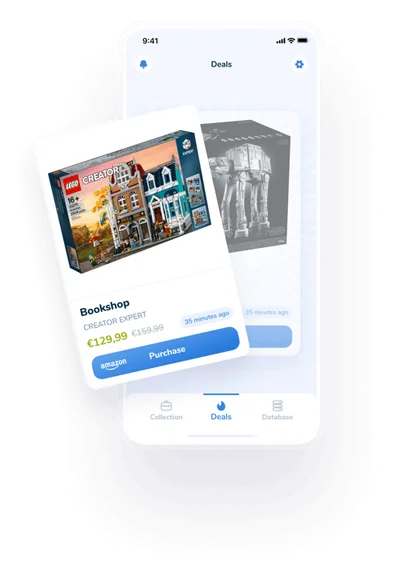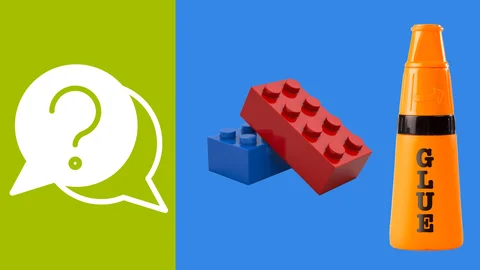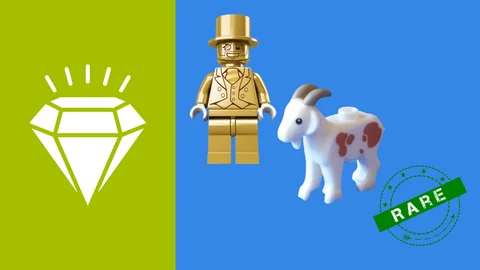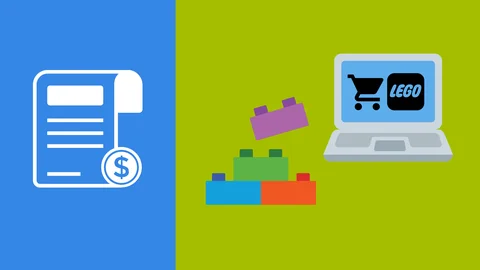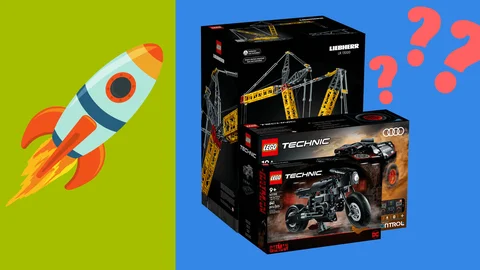In the world of toys, Lego® is a well-known brand that brings back happy memories of building and creating things as a child. It is known for its sets featuring Lego houses, movie characters, and more. But did you know that before becoming a powerhouse name, it has been nearly a century ago since the first Lego set was introduced?
Lego is a toy that is enjoyed by millions of children and adults for generations. With its iconic interlocking bricks and wide range of themes, Lego has become a symbol of creativity, imagination, and play. But where did it all start? What was the first Lego set like, and how has it evolved over the years?
In this article, we'll look at the brief history of Lego. From its humble beginnings in 1932 as a wooden toy company to its current status as a cultural icon. We'll take a trip down memory lane to discover the history, innovation, and cultural significance of the first Lego set and its role in shaping the world of toy bricks.
The beginning of Lego®
When most people think of Lego®, they think of the colorful plastic blocks that can be used to build just about anything imaginable. But did you know that the first Lego brick was actually made of wood?
The beginning of Lego can be traced back to 1932 when Danish carpenter Ole Kirk Christiansen started producing wooden toys in his carpentry workshop. He named his company Lego, which is derived from the Danish words "leg godt," meaning "play well."
Over the next few years, after experimenting with plastic, it built its first plastic interlocking brick play set in 1949. This made the sets cheaper to produce and allow for more elaborate designs. The first plastic set was called "Automatic Binding Bricks”. And though it was not yet perfect, the creation of the Automatic Binding Bricks marked the turning point in the development of Lego.
Lego continued to refine and expand its product line until it evolved into the Lego we see today.
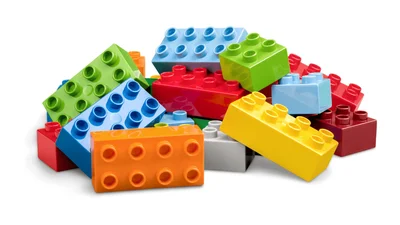
In 1955, the Lego System in Play was introduced as a new type of building toy. It consisted of interlocking plastic bricks that allowed for the creation of various structures and objects, and it quickly became popular among children and families.
The first Lego® set
The introduction of the Lego® System was a breakthrough for the Lego company as it opened up a whole new world of creative play and learning opportunities for children. The Lego Town Plan was the first theme to be launched under the Lego System. The Town Plan was designed to create a realistic urban environment.
1956 marked the birth of the first ever Lego set–the Lego System 236 Garage with Automatic Door, which was the first set introduced under the Lego System. This set was revolutionary for its time, as it brought together the fun of building and playing with a classic car garage. With its base plate that can spring the garage door to open and shut, this set offers a lot of interactivity in addition to being a fun and buildable toy.
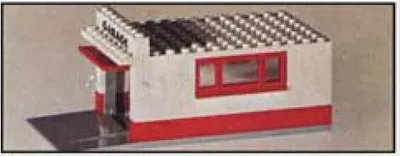
Following the Garage with Automatic Door, several sets under the Lego System were introduced not long after:
- Lego 211: Small House Set (1958)
- Lego 210: Small Store Set (1958)
- Lego 308: Fire Station (1958)
- Lego 309: Church (1958)
- Lego 310: ESSO Filling Station (1958)
These sets were made so Lego builders can expand their Towns.
The first Lego® Accessories
After the introduction of the Lego® Town Plan theme and several sets under it, Lego also included several ranges of accessories, such as doors, windows, trees, and bushes:
- 214: Ten Windows and Doors, Red (1958)
- 230: Six Trees and Bushes (1958)
- 232: 16 Road Signs (1958)
The first Lego accessories were designed to add more realism and detail to the building sets. It also expanded the creative possibilities of its building sets and sparked the imaginations of Lego enthusiasts around the world.
The first Lego® licensed set
One of the first licensed sets was the Lego® System 1307 VW Auto Showroom, which was a tribute to the iconic automotive showroom that opened in Frankfurt, Germany in 1957.
The first Lego® Wheels
Prior to the introduction of wheels, Lego® models were limited to stationary structures and buildings, but with the addition of wheels, builders could create vehicles and other moving objects. The first Lego wheels, Lego System 400 Small Wheels with Axles, was introduced in the 1960s. They were small, round pieces that could be attached to axles, and they were made of the same high-quality, durable plastic as the rest of the Lego system. The introduction of Lego wheels was an important step forward in the evolution of the Lego toy system.

The Evolution of Lego® Sets
Lego® sets have come a long way since the introduction of the first Lego set in 1956. What started as a simple wooden toy block set has now evolved into a world-renowned brand that offers an array of intricate and diverse sets catering to all age groups.
Here’s how the Lego sets have changed over the years:
1960s-1980s: Expansion and New Themes
The era between 1960s to 1980s marked a major milestone in the evolution of Lego® sets and helped to solidify Lego’s reputation as a versatile and innovative toy brand.
First Lego Minifigure
Lego® continued expanding its product line. In the 1970s, the first Lego theme was launched—the Lego Space. Several themes were also added thereafter, like Castle and Town. The company also introduced its first minifigure—the Lego Policeman minifiugure from the Lego® Town 600 Police Car set.
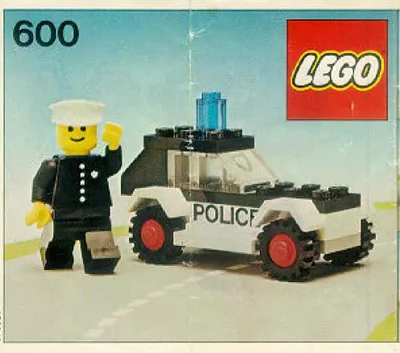
First Lego® Train
In 1966, the Lego® 080: Basic Building Set with Train was created and it was the first Lego Train ever. Surprisingly, it was also one of the first Lego set with complete elements. It consisted of an engine, a truck, a carriage, a railway track, four buildings, a policeman, and two trucks.
1990s-2000s: Technological Advancements and Licensing
With the advent of technology in the 1990s and 2000s, Lego® sets underwent a major transformation. The company began incorporating electronic components into its sets, such as lights, motors, and sensors, which allowed for more advanced and interactive building experiences.
Additionally, Lego began partnering with popular movie and entertainment franchises to create sets. In this era, Lego sets from Star Wars and Harry Potter, and the Lego Lord of the Rings were the first ones to be created.
First Lego® Star Wars Set
The first Lego® Star Wars set was the Lego Star Wars™ 7140 X-wing Fighter, released in 1999. The set features a detailed replica of the X-wing fighter from the Star Wars movies. The set also comes with minifigures of Luke Skywalker, R2-D2, and a rebel pilot, adding to the playability and overall appeal of the set.
First Lego® Harry Potter Set
The Lego® Harry Potter 4701 Sorting Hat is the first Harry Potter set, and it was released in 2001. It includes a buildable replica of the magical Sorting Hat, which plays a crucial role in determining which house students are placed in at Hogwarts School of Witchcraft and Wizardry. It is a sure classic collectible for fans of the series.
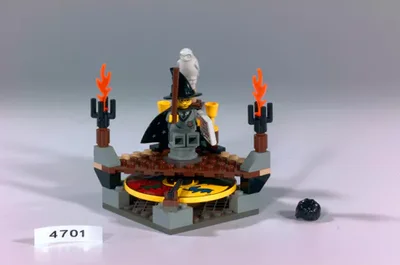
21st Century: Lego® Video Games, Movies, and TV Show
In the 21st century, Lego® has continued to evolve and expand its product line. It continued to acquire more licenses for different popular movies and created sets for them like the Lego Batman and Lego Marvel Super Heroes. Different Lego sets from Disney movies were also created, and one of the most popular ones is the Lego Disney 43198 Anna’s Castle Courtyard.
Lego also started to acquire licenses for popular video games, and created more sets such as the Lego Minecraft and Lego The Simpsons. And in 2014, the Lego Movie was released, which was both a critical and commercial success, leading to a spin-off sequel, The Lego Batman Movie.
In 2017, the first TV show to feature Lego has been released. It was called Lego Masters, which is being aired in different countries like USA, Germany, and Australia.
Conclusion
The beginning of Lego® was a humble one, but it laid the foundation for a company that would go on to revolutionize the toy industry. With its innovative interlocking system and endless creative possibilities, Lego has inspired generations of children and adults to explore their imaginations and develop critical thinking and problem-solving skills.
The legacy of the first Lego set has stood the test of time, and its enduring popularity is a testament to the ingenuity and versatility of this classic toy. The first Lego set represents a turning point in the history of play and creativity, and its impact will be felt for generations to come.
If you want to learn more about Lego, check out our Lego Glossary where you can find the meaning of some of the important Lego terms. You want to buy Lego sets at a bargain price? In the Brickfact price comparison you can choose from a variety of providers and save money. The Brickfact app informs you via push notification as soon as a new Lego deal is available. The Brickfact app is free and available for both iOS and Android.
